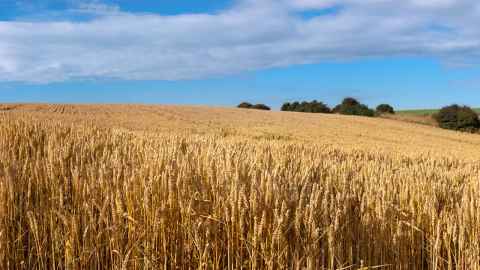We should tread carefully in herbicide review
30 May 2025
Analysis: Melanie Kah recommends taking a precautionary approach where our reliance on chemicals is minimal and limited to situations where their benefits clearly exceed the potential associated risk.

Public consultation recently closed on the NZ Food Safety proposal to change the residue limits allowed on food for more than a dozen agricultural compounds, included raising the residue limit of glyphosate on barley, oats, wheat and field peas.
This has raised concerns partly because glyphosate is often seen as an exemplar of the toxic compounds we use to grow food, and the proposed amendment effectively means more tolerance for glyphosate residue on our food. Should we be afraid? Based on what we know, probably not.
I’m not defending the use of glyphosate (in an ideal world we wouldn’t be as dependent on the use of pesticides to grow our food) but we need to recognise it is less toxic than many of the other agricultural compounds currently in use. Of course, saying ‘It’s not as bad as other chemicals’ doesn’t mean we shouldn’t be alert to any such changes, but it gives me an excuse to point to what we should be concerned about.
The change proposed reflects potential residues resulting from current uses of glyphosate as pre-harvest desiccant. This does bother me.
Maximum residue limits are reviewed and set by the Ministry for Primary Industries up to four times a year, by a team of hardworking and experienced scientists. These are maximum legal levels of agricultural compound residues permitted in food for sale in New Zealand. As stated by the ministry in its latest consultation document, “To manage these residues, it is important to ensure that only the lowest amount of an agricultural compound is used to consistently achieve its intended purpose. This will leave the smallest amount of residue practicable without compromising the compound’s efficacy.” So, it is all about maximising the benefits of using a chemical, while minimising the potential associated risks.
NZ Food Safety has proposed that the maximum residue limit for glyphosate be raised to 10 mg/kg, which is similar or lower compared to Australian and international limits for similar crops. It may seem very high however, when compared to the default value maximum residue limit (0.1 mg/kg) on crops such as fruit where glyphosate is not supposed to be used.
The new limit does not mean farmers aim to have that level on produce. Surveys indicate that levels of residues are usually lower than that; farmers generally follow good agricultural practices and have no advantages in overusing pesticides (including that they have to pay for them).
The change proposed reflects potential residues resulting from current uses of glyphosate as pre-harvest desiccant. This does bother me. This practice consists in spraying relatively high amounts of herbicide on a crop close to harvest time to kill the plant, leaving it to dry out in the field, which makes it easier for farmers to harvest it.
This has become common practice on cereal grains like oats, wheat and barley. The issue is that spraying large amounts of herbicides may have unintended consequences that we have not identified yet. Think about long-term residues accumulating in soil and affecting creatures that live within it for instance. Such impacts are difficult to demonstrate, and would take a long time to do so.
Glyphosate is a good choice for this practice as it has a relatively low toxicity to mammals and other non-target organisms. Phasing out glyphosate would result in other herbicides being used instead, which would probably have more impact on human and environmental health. So, this would not be a good solution.
What I would argue for, is a genuine reconsideration of the benefits and risks associated with the use of pre-harvest desiccants. Could the crop be left to dry out naturally, without the support of chemicals? Productivity might be affected, but could this compensate for the decreased risks to our health? Other jurisdictions have determined that the risk associated with desiccants are not worth it; the practice has been banned in other parts of the world such as Europe, mainly due to concerns related to residues on grains and impact on environmental health.
In summary, increasing our tolerance for pesticide residues on food based on the assumption that negative effects are negligible is a risky approach. Demonstrating the absence of risk associated with pesticide uses is extremely difficult but as the adage goes, the absence of evidence (e.g. that glyphosate has detrimental effects on the environment) is not the same as the evidence of the absence of risk.
We should acknowledge the uncertainty associated with current toxicity assessment. I would therefore recommend adopting a precautionary approach where our reliance on chemicals is minimal and limited to situations where their benefits clearly exceed the potential associated risk. In short, I question the practice of using pre-harvest desiccants.
Melanie Kah is an associate professor in the School of Environment, Faculty of Science.
This article reflects the opinion of the author and not necessarily the views of Waipapa Taumata Rau University of Auckland.
This article was first published on Newsroom, It will pay to tread carefully in herbicide review, 30 May, 2025
Media contact
Margo White I Research communications editor
Mob 021 926 408
Email margo.white@auckland.ac.nz